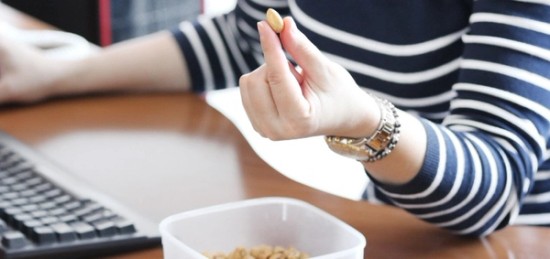By: Kelsey Lorencz
It’s no surprise that the Dietary Guidelines for Americans 2020-2025 recommend including a variety of plants in your diet (1). They recommend including a higher intake of vegetables, fruits, legumes, whole grains, nuts and unsaturated vegetable oils along with low-fat dairy and lean meats and seafood.
People often worry about getting enough protein when eating more plant-based foods. Nuts, seeds, soy products, beans, peas and lentils are all easy ways to get your protein in addition to meat and other animal products (1). But what about iron? Iron from the food you eat helps your body make hemoglobin, the protein in red blood cells that carries oxygen to every cell in your body. Without enough iron, you’d be tired, weak, have trouble concentrating and your immune system could take a hit, making it harder to fight off infections (2).
If hearing about iron brings a big juicy steak to mind, you’re not wrong. Red meat, liver and seafood, like oysters, are great sources of iron that your body can easily use (2). While animal products do have iron, many plant-based foods can have more per serving. Just to name a few, white beans, spinach, lentils and tofu have more iron per serving than one serving (3 ounces) of red meat (3).
The recommended daily allowance (RDA) for iron changes with age and is different between men and women. Women of child-bearing age need to consistently replace iron stores due to menstruation. Adult men require 8 mg of iron each day, while adult women need 18 mg daily until age 50, where the requirements fall to 8 mg a day (3).
The concern with counting on plant-based foods, like peanuts, to give you the iron our body needs stems from the fact that it’s more difficult for your body to absorb and use than iron from animal products. In fact, the RDA for iron is 1.8 times higher for vegetarians than it is for people who eat a mixed diet.
Thankfully, there’s an easy way to boost the amount of iron you absorb from plants. Ascorbic acid, otherwise known as vitamin C, can increase the amount of iron you absorb from plants (4).
Easy ways to combine the two nutrients include (3,5):
- Iron-fortified breakfast cereal and a glass of orange juice
- Peanuts sprinkled on stir fry that includes broccoli, spinach and sweet peppers
- Tofu and broccoli drizzled in peanut sauce
- Citrus salad with mint and peanuts
Kelsey Lorencz, RD is the owner of Graciously Nourished, a plant-focused eating consulting company that provides budget-friendly plant-focused recipes.
References:
- U.S. Department of Agriculture and U.S. Department of Health and Human Services. Dietary Guidelines for Americans, 2020-2025. 9th Edition. December 2020. Available at www.DietaryGuidelines.gov
- U.S. Department of Health and Human Services. (n.d.). Office of dietary supplements - iron. NIH Office of Dietary Supplements. Retrieved March 22, 2022, from https://ods.od.nih.gov/factsheets/Iron-Consumer/
- U.S. Department of Health and Human Services. (n.d.). Office of dietary supplements - iron. NIH Office of Dietary Supplements. Retrieved March 22, 2022, from https://ods.od.nih.gov/factsheets/Iron-HealthProfessional/
- Harvard T.H. Chan School of Public Health. (2020, October 19). Iron. The Nutrition Source. Retrieved March 22, 2022, from https://www.hsph.harvard.edu/nutritionsource/iron/
- U.S. Department of Health and Human Services. (n.d.). Office of dietary supplements - vitamin C. NIH Office of Dietary Supplements. Retrieved March 22, 2022, from https://ods.od.nih.gov/factsheets/VitaminC-HealthProfessional/
